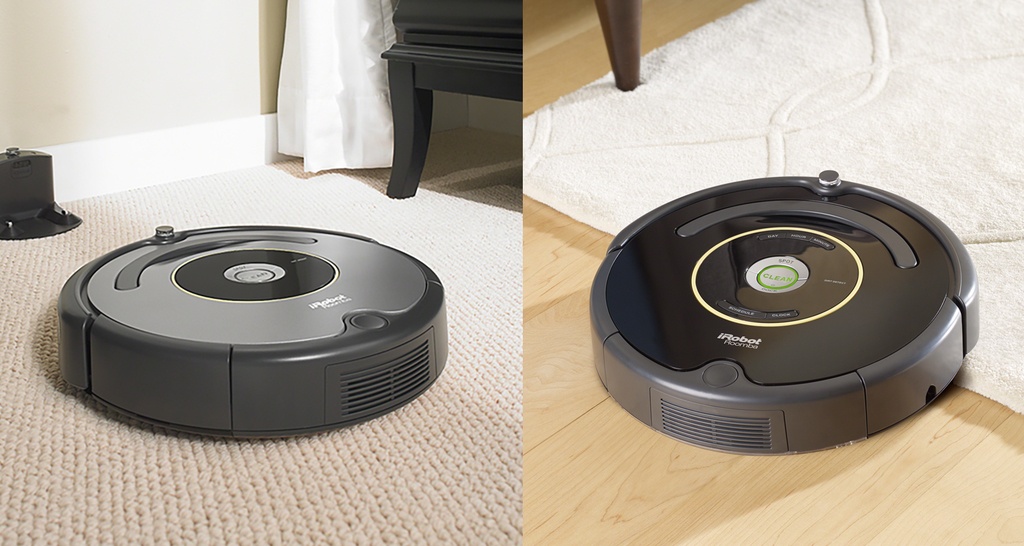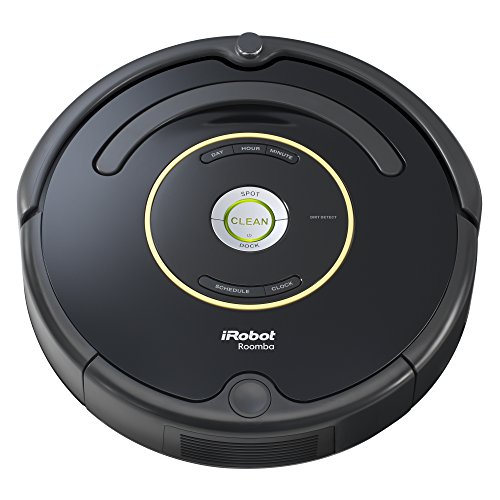Sometimes iRobot gets it absolutely right, and sometimes they leave us scratching our heads wondering what they were thinking. While we may never know what went on in the meeting room, we are left decoding the Roomba 650 and Roomba 652.
In this article, I will take you through the features and options of the two robotic vacuums and do my best to explain the differences, similarities and functions of the two machines. With any luck, by the time you have finished reading the article, you will have a better understanding of the two units and why I pick the Roomba 650 as the better option.
Contents
The Differences
Just by looking at the two machines you may not see any differences. There are very few, let’s see what they are.
- The Roomba 650 includes a Virtual Wall Barrier that the Roomba 652 doesn’t come with.
- The 652 has a larger internal lithium-ion battery than the 650.
- The 652 has a gloss black color and finish; the 650 has a matte black color.
The Similarities
The two machines are the same in every other way. However, I will point out the more important similarities for you here.
- Both the 650 and 652 have a runtime up to 60 minutes.
- Each will automatically return to the docking station to recharge if the battery runs low.
- The robots have the same dimensions and weight.
- The Roomba 650 and 652 use iRobot’s iAdapt navigation technology.
- AeroVac filtration system is used in both vacuums.
- You can create a seven-day schedule on either machine.
- Both come with a one-year factory warranty.
Specifications Comparison Chart
Let’s take a look at each robot side by side to see what they offer you, or what they don’t offer you.
| Roomba 650 | Roomba 652 | |
| Battery | 2200mAh Lithium-Ion | 2600mAh Lithium-Ion |
| Runtime | Up to 60 minutes | Up to 60 minutes |
| Recharge Time | 3 hours | 3 hours |
| Automatic Recharge | Yes | Yes |
| Navigation | iAdapt | iAdapt |
| Drop Sensors | Yes | Yes |
| Bump Sensors | Yes | Yes |
| Dirt Detection Sensors | Yes | Yes |
| Filtration | AeroVac | AeroVac |
| Spot Clean | Yes | Yes |
| Edge Clean | Yes | Yes |
| Side Brushes | 1 | 1 |
| Cleaning Method | 3-stage with dual brush bars | 3-stage with dual brush bars |
| Wireless Communications | No | No |
| Mobile App | No | No |
| Voice Control | No | No |
| Local Control | Yes | Yes |
| Scheduling | Yes | Yes |
| Containment | Virtual Wall Barrier | Separate Purchase |
| Warranty | 1 Year | 1 Year |
| Price | Check on Amazon | Check on Amazon |
Dimensions, Features and Options
I want to go inside the robots and show you a bit of what they have going for them and help you decide which, if any, does it better.
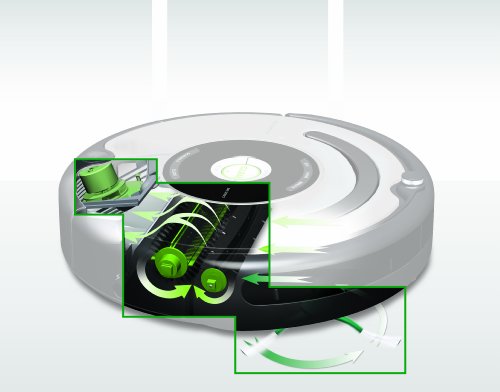
1. Batteries
One of the very few differences in the two machines is the batteries they have installed. But just how different are they, really? The fact is that they really aren’t. There have been improvements in the lithium-ion packs that iRobot uses, but the 600 series (minus the 614) didn’t get the benefit of the upgrades.
If you were to crack open your Roomba (please don’t do this), you would find that the Roomba 650 and 652 look virtually identical, and in fact they are. However, what you won’t be able to see is that the battery pack of the 652 is a stronger battery, just barely.
The 2600mAh battery pack in the Roomba 652 is marginally larger than the 2200mAh pack found in the Roomba 650. So what does the difference mean? In short, nothing.
The batteries will take the same amount of time to recharge, which is right around three hours. They will also drain at the same rate, which is about one hour of runtime. The reason that you won’t notice a difference is because of how the machine uses the battery.
While it is true that the 2600 pack will run longer and recharge faster than a 2200 pack, they aren’t being used that way. The circuitry takes the same pull from the batteries and both are programmed to use more than required.
It seems a little confusing, and unless you are familiar with electronics, it pretty much is. However, to briefly explain: The battery supplies power on an on-demand basis. The demand is determined by what is being used and how much power it needs. If the motor requires ten milliamps (just an example) the battery will provide 11 milliamps. The extra power is absorbed by capacitors and resistors and basically just goes away.
This is why the 2600 and 2200 battery packs will drain at the same rate.
Bottom Line: This is a tie. Even the larger battery size doesn’t have an effect.
2. Floor Types
Roomba vacuums of all series lines are rated for all floor types. Is that really the truth though? Can they effectively clean any and all floor types? The truth is they pretty much can.
Hard flooring is no problem at all for the Roomba 650 or 652. Vinyl, tile, hardwood, softwood, laminate or even stone will all be cleaned by the robots efficiently and effectively. It should be noted though, that the brush bars use medium and hard bristles. If you have sealed stone or softwood flooring, they may cause scratches.
You should test the robot in a small area prior to letting it loose. There are reports that these two models can upset a finish on the softer woods and some stone flooring sealants.
When it comes to the carpet, you are also pretty well covered. Low, medium and even high pile carpeting is no problem for the vacuums. However, once you get into the shag style carpeting, you may have a few issues.
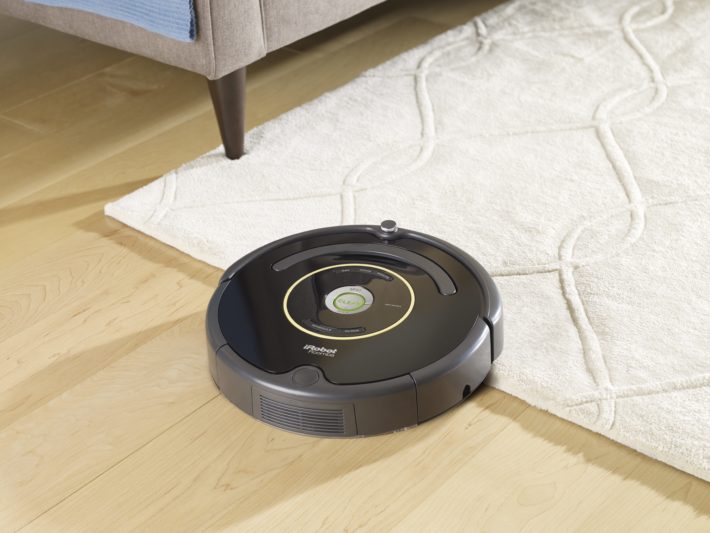
Low shag or modern shag doesn’t get tangled as much, even with the bristles in the brush bars. High pile shag, such as that made famous in the 1970s, can cause the robot to slow down or even become stuck. You should keep a close eye on the unit if you have this type of carpeting until you know if it will handle it or not.
Bottom Line: This is a tie. Both units have the same motor, power and brush bars and clean all floors the same.
3. Containment
iRobot has developed a containment solution that is arguably the best in the industry. Their virtual wall barriers are a battery operated tower that puts out an infrared beam to block off doorways, entryways or specific portions of a room.
The infrared beam is detected by the sensors on the front and sides of the robots and act as a physical barrier making the robot stop and change direction. The dual mode barriers also have “halo-mode,” and instead of a beam, it produces a circular area three feet from the tower.
Halo-mode is useful to put around planters, floor lamps, or pet dishes that you don’t want the robot near or to bump into accidentally.
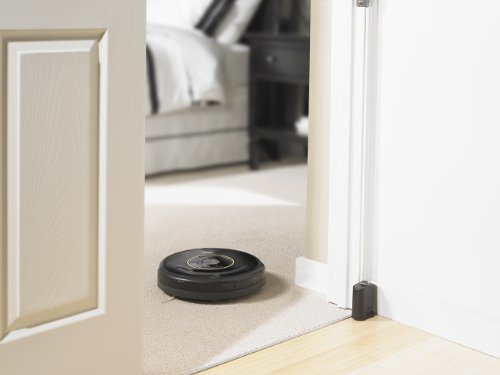
The Roomba 650 comes with one virtual wall barrier and you can use it right away. You can also purchase more barriers directly from iRobot or from various third party vendors online. They run on double “A” batteries which are included so that you can use the barriers right away.
The Roomba 652 does not come with a barrier included. However, you can purchase them separately and they will work right out of the box.
Bottom Line: The Roomba 650 wins. It has a barrier included.
4. Controls
Controlling the Roomba 650 and 652 is simple, yet limited. There are local controls on the units themselves. Push buttons used to tell the robots what you want to be done or to create a schedule.
You can press the clean button at any time to send the robot off on a cleaning cycle. You can do this while you are home or as you are leaving for the day. It will map and navigate your home and clean while you are gone.
The noise is a little high, so if you are home, conversations and watching television while the robot is in the same room may be a bit difficult.
You can also use the Day, Hour and Minute buttons to create a schedule. The schedule will set the time of day for up to seven days that the robot will go on a cleaning cycle. This is handy to use when you will be at work or away from the home to allow the robot to clean without getting in the way.
You can also have the robot do a spot clean. With spot cleaning mode the robot will spiral outward around a specific area (that you place it in) for about three feet, give a slow and thorough cleaning of that area.
What you will not get is any other form of control. Neither the Roomba 652 nor the 650 have wireless communications. This means you cannot use the mobile app to set up and run the robots. It also means there is no way to use voice control.
Without the use of WiFi networks you cannot connect the Roomba 650 or 652 you won’t be able to use voice commands with Google Home or Amazon Alexa devices. I should also let you know that there are no infrared remote controls, either. You only have the local controls for use.
Bottom Line: This round is a tie. Local control options are the only choice for both robots.
5. Sensors
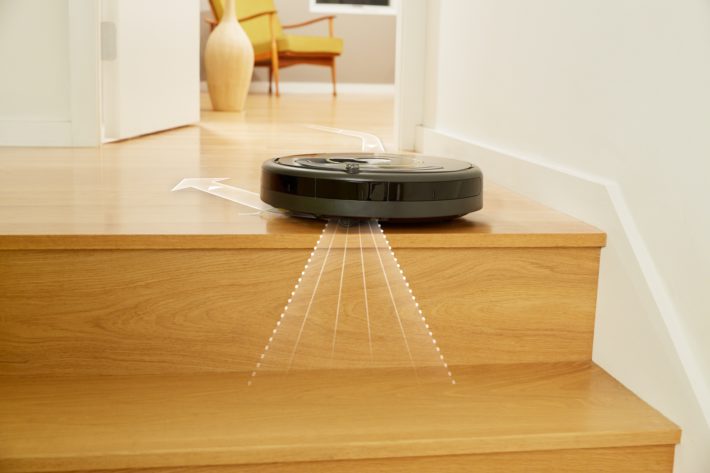
There are three types of sensors on each of the robots. The first is the drop sensor. These sensors look out for drop-offs, ledges and stairs. They prevent the robots from taking a tumble and causing damage.
The second sensor type is the bump sensors. These sensors use infrared and acoustics to tell the robot that an object or collision is near. The robot will slow down, change direction or make other attempts to get around the detected object. This prevents heavy collisions and damage to walls or furniture.
The last type of sensors are the dirt detection sensors. These sensors alert the robot that the area it is currently cleaning is not clean enough. When they activate, the robot will take a small circle to clean that same area with a second pass. This can continue a few times in heavily soiled areas.
Bottom Line: Another tie. These sensors are present in both models.
What I Like About The Roomba 652
- Easily cleans on time with scheduling.
- The larger battery is a good attempt to prolong runtime.
- Maintenance is a breeze.
What I Like About The Roomba 650
- Great cleaning on all floor types.
- Virtual wall barrier included.
- Dirt detection sensors find all the heavily soiled areas.
- No fuss or extra features to get confused about.
In Conclusion
If you are in the market for a low-cost robot vacuum with a name behind it that you can trust, the Roomba 650 and Roomba 652 are decent options. Are they right for you?
The Roomba 652 is a good cleaning robot on all floor types, with the local controls you can schedule a clean a week in advance or simply press the button and have it clean right then. Without the added features of mobile apps and voice commands, you may lose out on some features. However, the cost is low enough to start out with a powerful robot vacuum that will be reliable for years to come.
The Roomba 650 has the same features (or lack of features) as the Roomba 652. However, the smaller battery may cause some to pause. They both offer the same charge time and runtime though so that you wouldn’t notice a difference in battery life.
What you will notice though, is the added benefit of not having to make a separate purchase for the containment barrier. As the Roomba 650 comes with a virtual wall barrier for roughly the same price point.
The Virtual wall barrier is the only real difference in the machines and for the same price, it makes the Roomba 650 the better option. Unless, of course, you would rather have a robot with a gloss black finish, instead.
